David Muirhead and I had Facebook conversation about finding pipefish with one-time Society member Ron Bellchambers recently, after David had posted this photo of a Crested pipefish on his Facebook page: –
Crested pipefish (a.k.a Briggs Crested pipefish)
(Taken by David Muirhead)
(This Crested pipefish is typically cryptic below detrital seagrass leaf on silty sand @ 4 m depth Second Valley 5-4-17. The crest of its dorsal fin is just visible where its trunk meets the seagrass blade)
I subsequently posted my own photo of the same pipefish, taken from the opposite side: –
Crested pipefish
(Taken by Steve Reynolds)
The conversation (with photos) led to the following comments from David (I thought that they were worth repeating in this article): –
“Pipefish are very hard to find . . . . But with practice you start to realize how common they are at most popular shore dive sites near Adelaide. Mainly (common) in the warmer months, but we can usually still find a few (from) mid-winter into early spring . . . . (It’s) Harder to find most of the other common inshore pipe fish species in winter e.g. Port Philip pipefish. But we do see a few Stigmatopora species 12/12. (They’re) Never prolific in winter but present when conditions allow diving.
I saw at least three Briggs Crested Pipe fish (all adults) on the Second Valley dive on 5-4-17, and they were all on sand with nearby patches of Posidonia seagrass, on the way out to, and back in from, Lasseters Reef directly off Second Valley beach.
I never saw any pipe fish for the first roughly twenty years of my diving, during which time I would have swum over or past thousands not hundreds, if the numbers I’ve seen at same sites every year for past twenty years or less are any guide!
Being small and of essentially no commercial interest with regard to food, and almost no commercial interest with regard to aquarium trade (other than illegal here in SA anyway) but the government regulatory system approved the live capture of many leafy seadragons over the same time frame and that door remains open to best of my knowledge, even as I type.
(I was diving with David from the beach in the morning one day when I saw dozens of pipefish of several species (e.g. Crested, Rhino, Wide-body, Spotted & Port Philip pipefish.)
Pipefish amongst seagrass
(Taken by Steve Reynolds)
(Pipefish)…being small, thin and very hard to see, even if you are wading thigh deep in flat calm clear water exactly where you dived from the beach that morning (Steve) when you saw dozens of pipe fish of several species (e.g. Crested, Rhino, Wide body, Spotted, Port Philip plus perhaps one or two equally small and cryptic shorthead seahorses), you are lucky to identify with confidence even a few pipefish on the bottom near your feet. But they ARE there right among the kids splashing about in waist depth or less!
Pipefish out in the open
(Taken by Steve Reynolds)
Nudge enough bits of the ever-present dead seagrass blades that are gently rolling in and out from the shore with each slight swell and eventually you will hit the jackpot – the “dead ” blade will react briskly by swimming actively for just long enough to blow its cover, then only a second or two later you are sure you imagined it because the pipefish has resumed its preferred dead seagrass blade or segment of blade, despite being only 30 or 50 cm away from your attacking foot!
The inshore biomass of such cryptic pipe fish in our gulfs must be huge during the summer and autumn every year. Not enough awareness of this exists even though the research into important components of the food chain (trophic pyramid) in temperate shallow subtidal and intertidal waters has escalated significantly over recent years.”

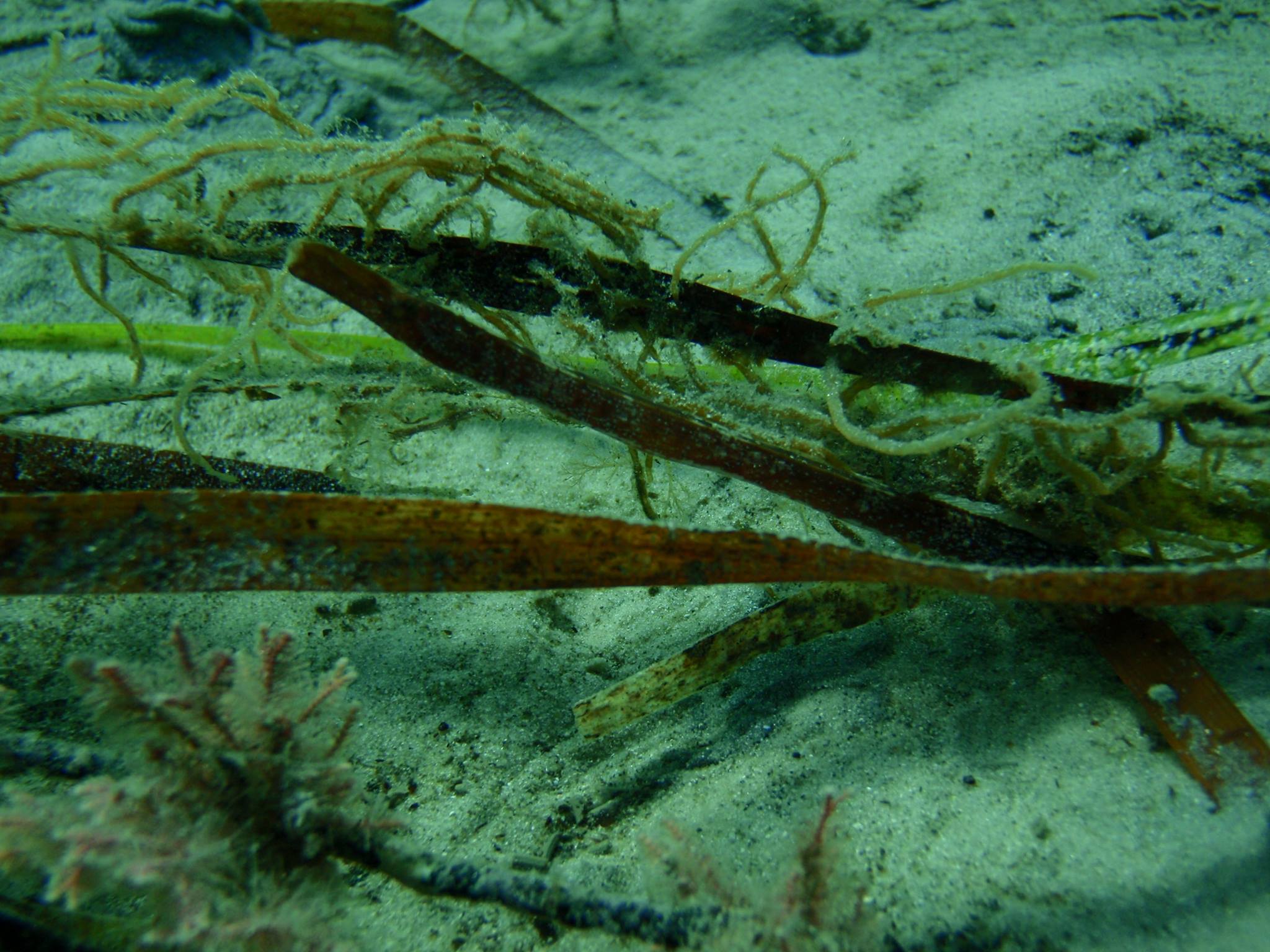
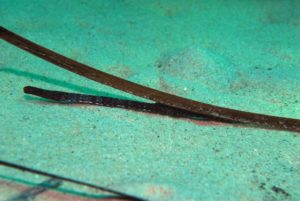
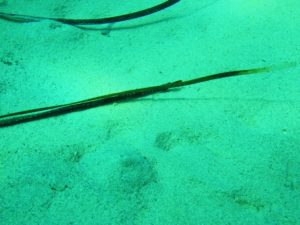
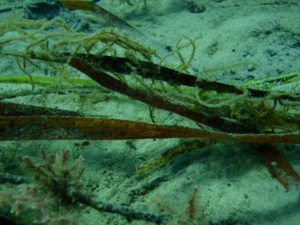
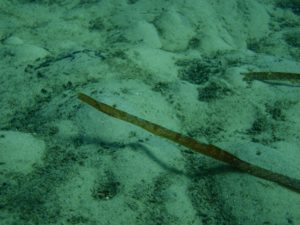
Be sure to check out the article found at https://mlssa.org.au/2015/08/23/the-wonderful-and-diverse-syngnathids-of-normanville-south-australia/